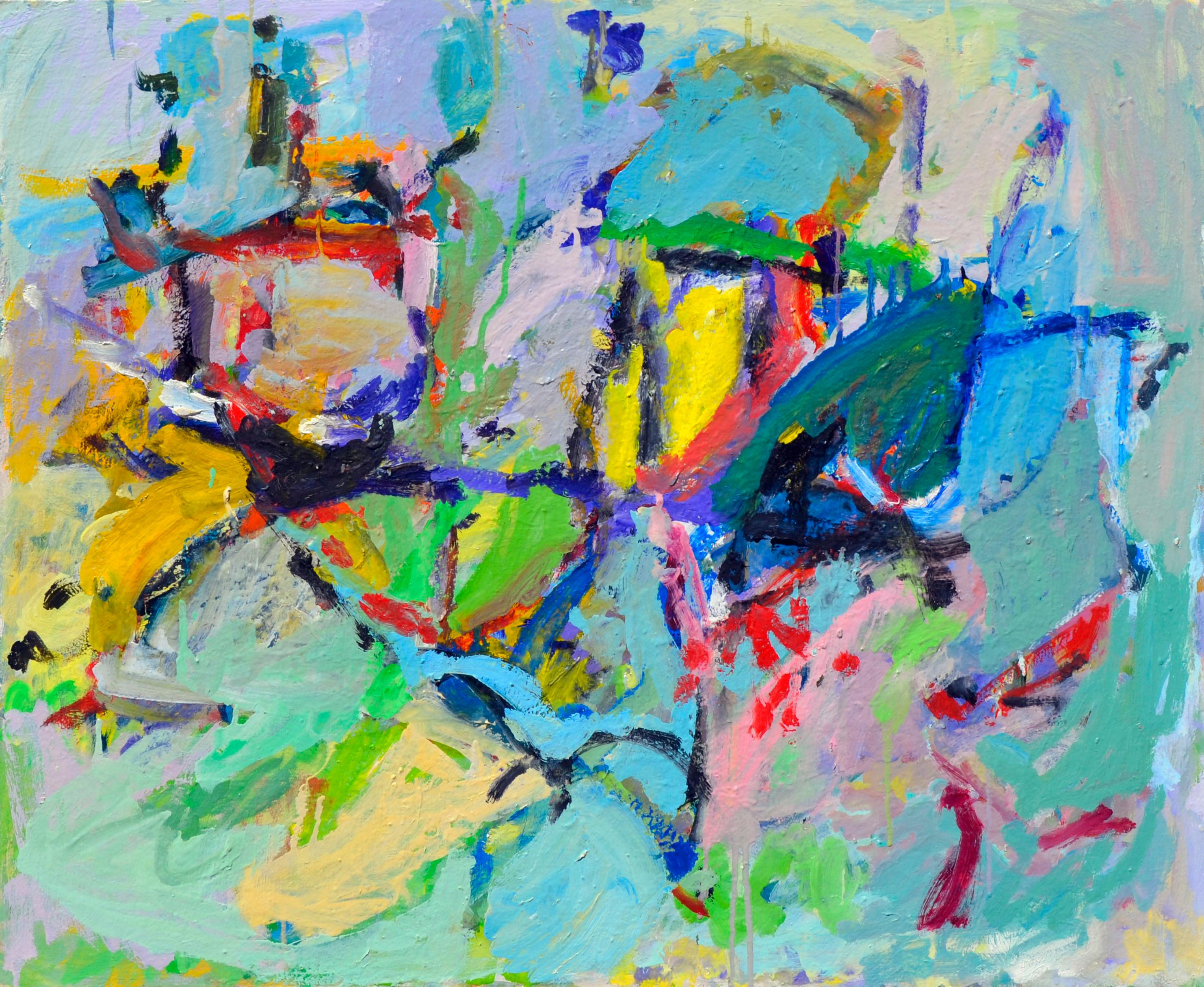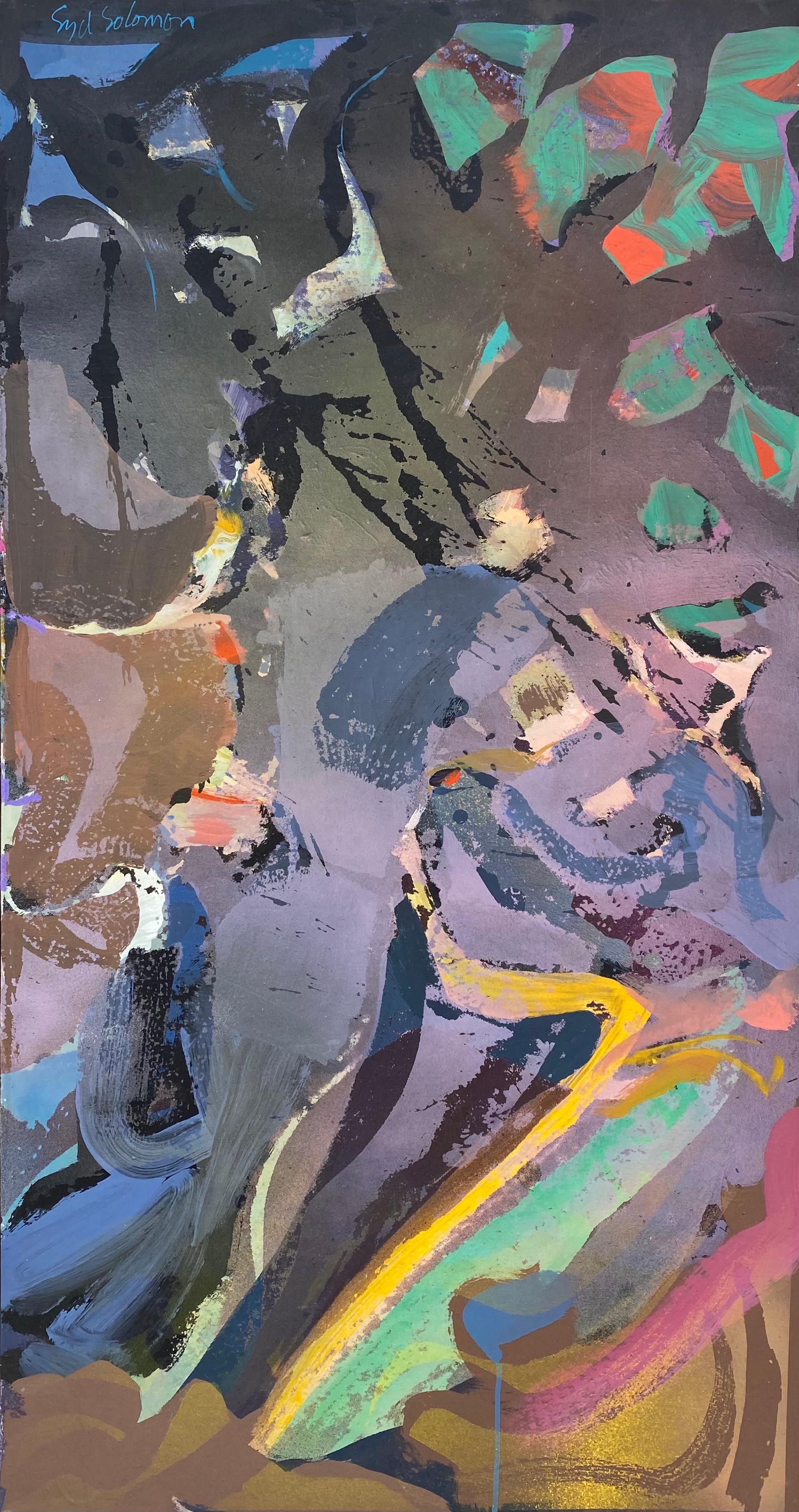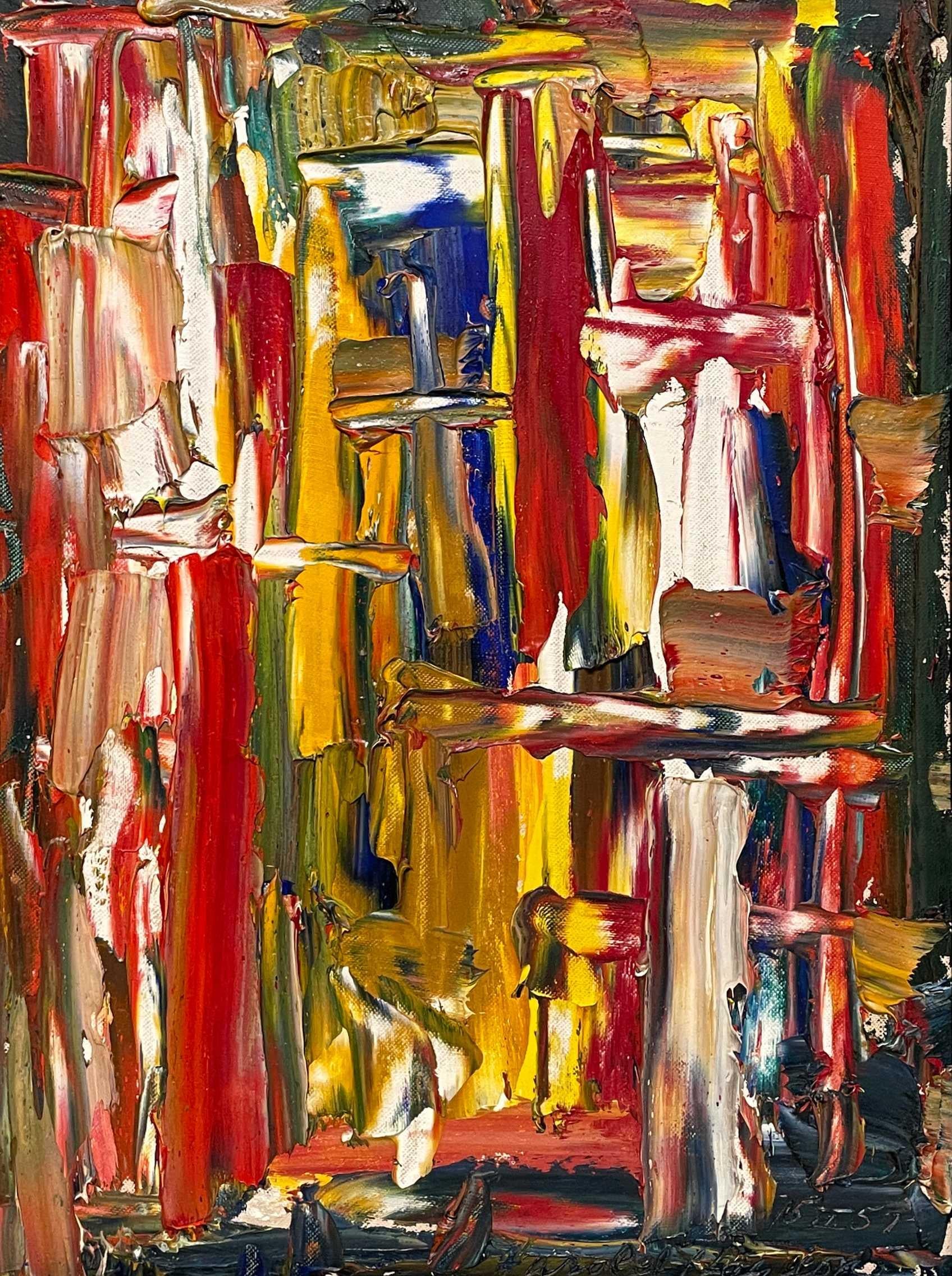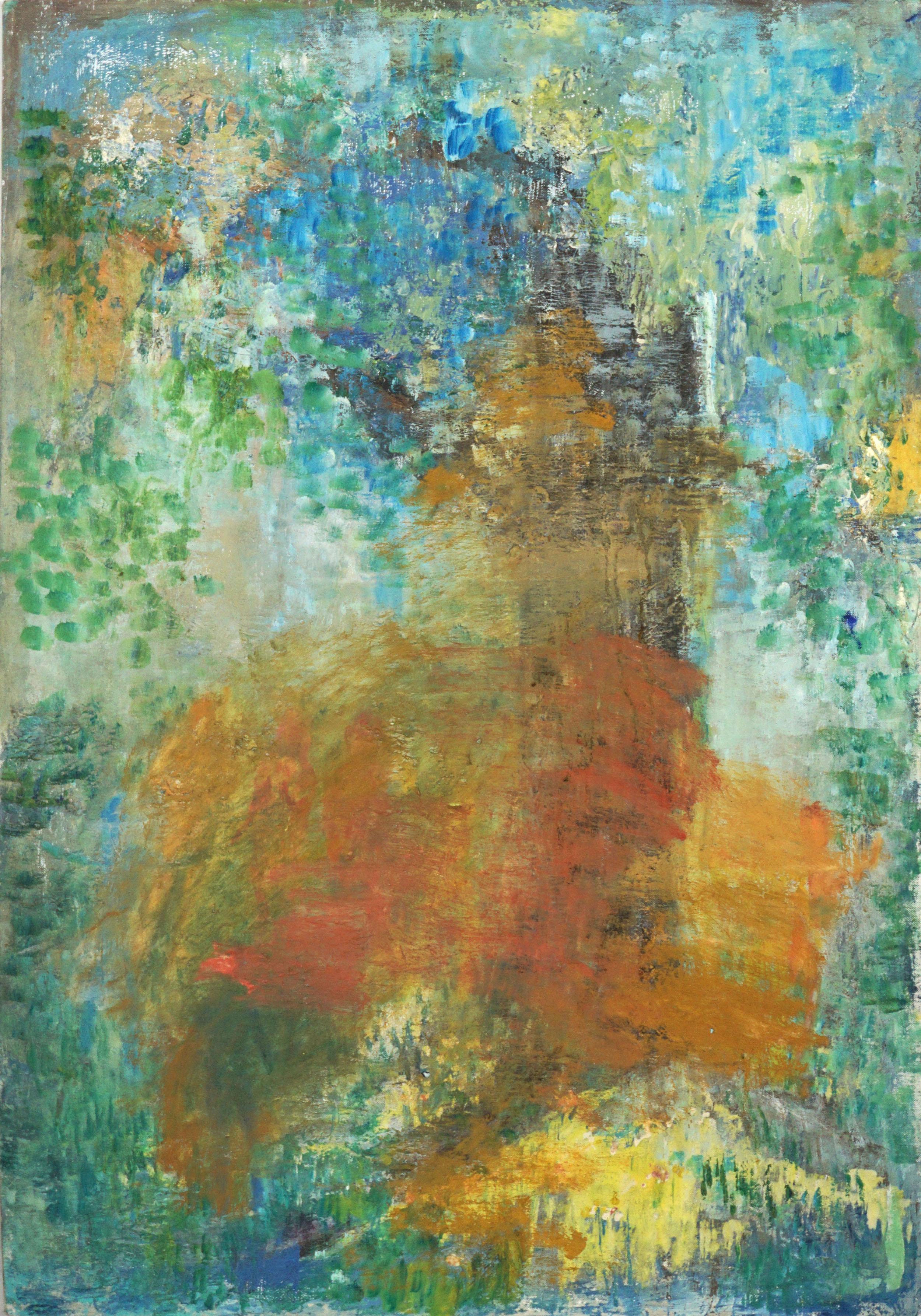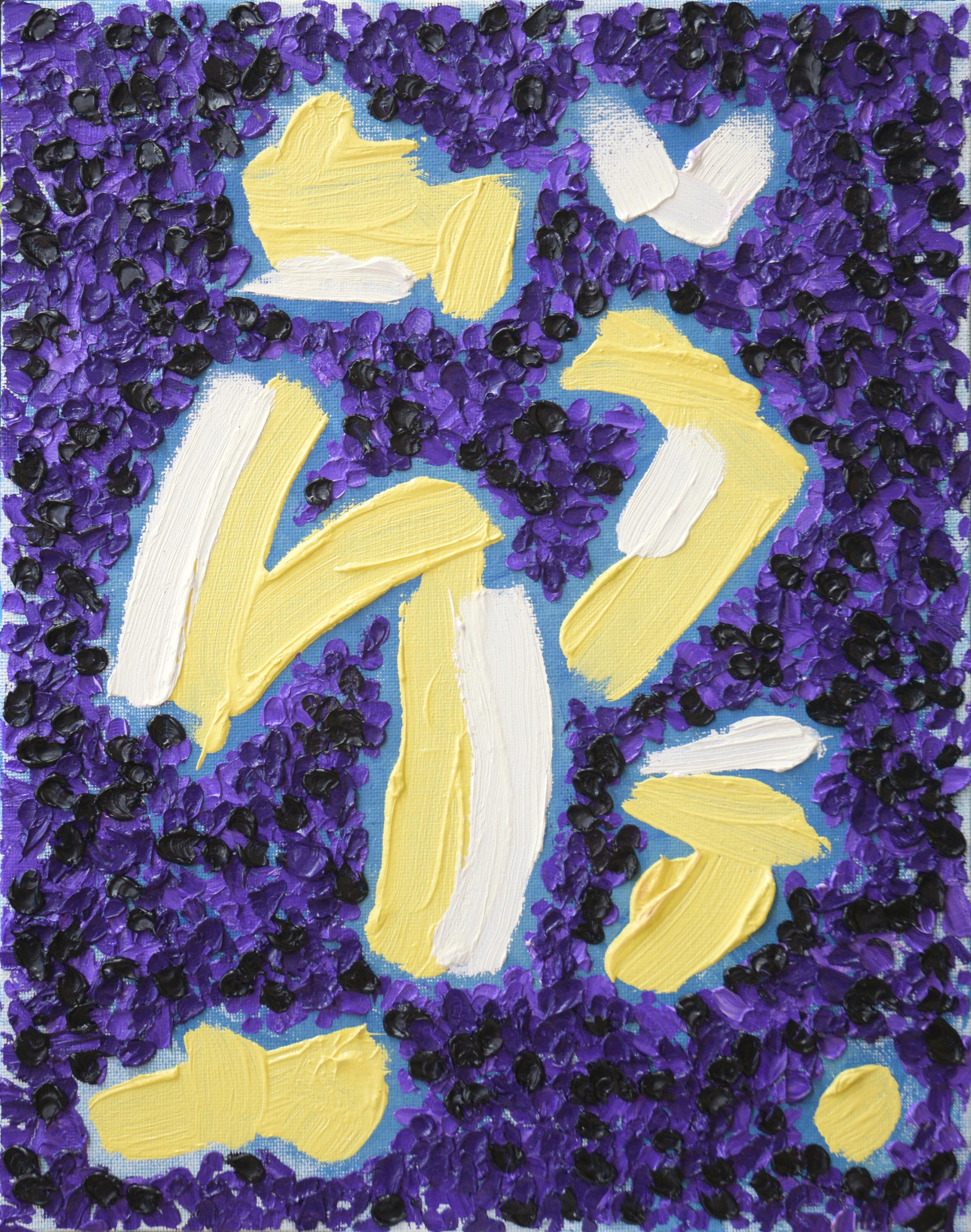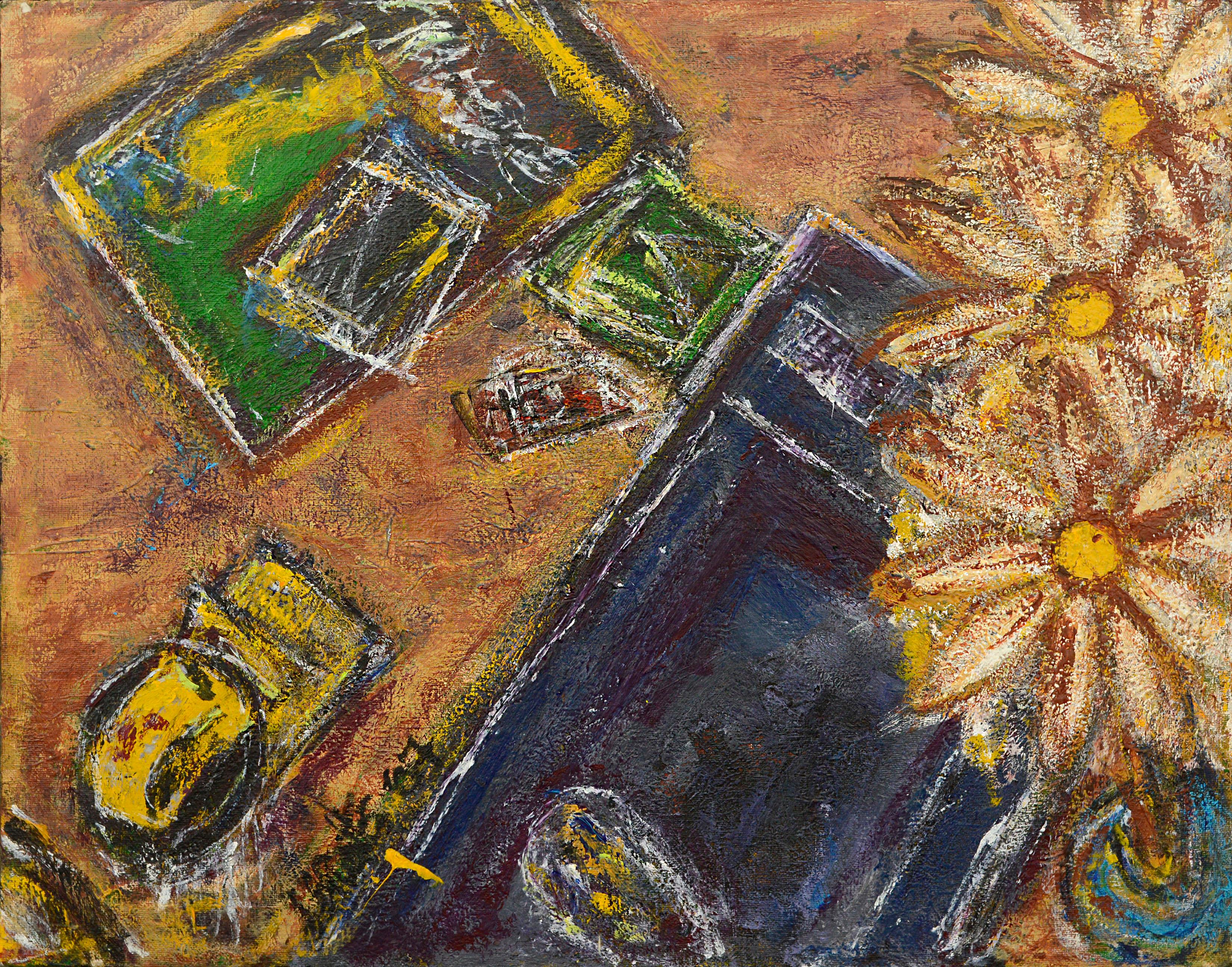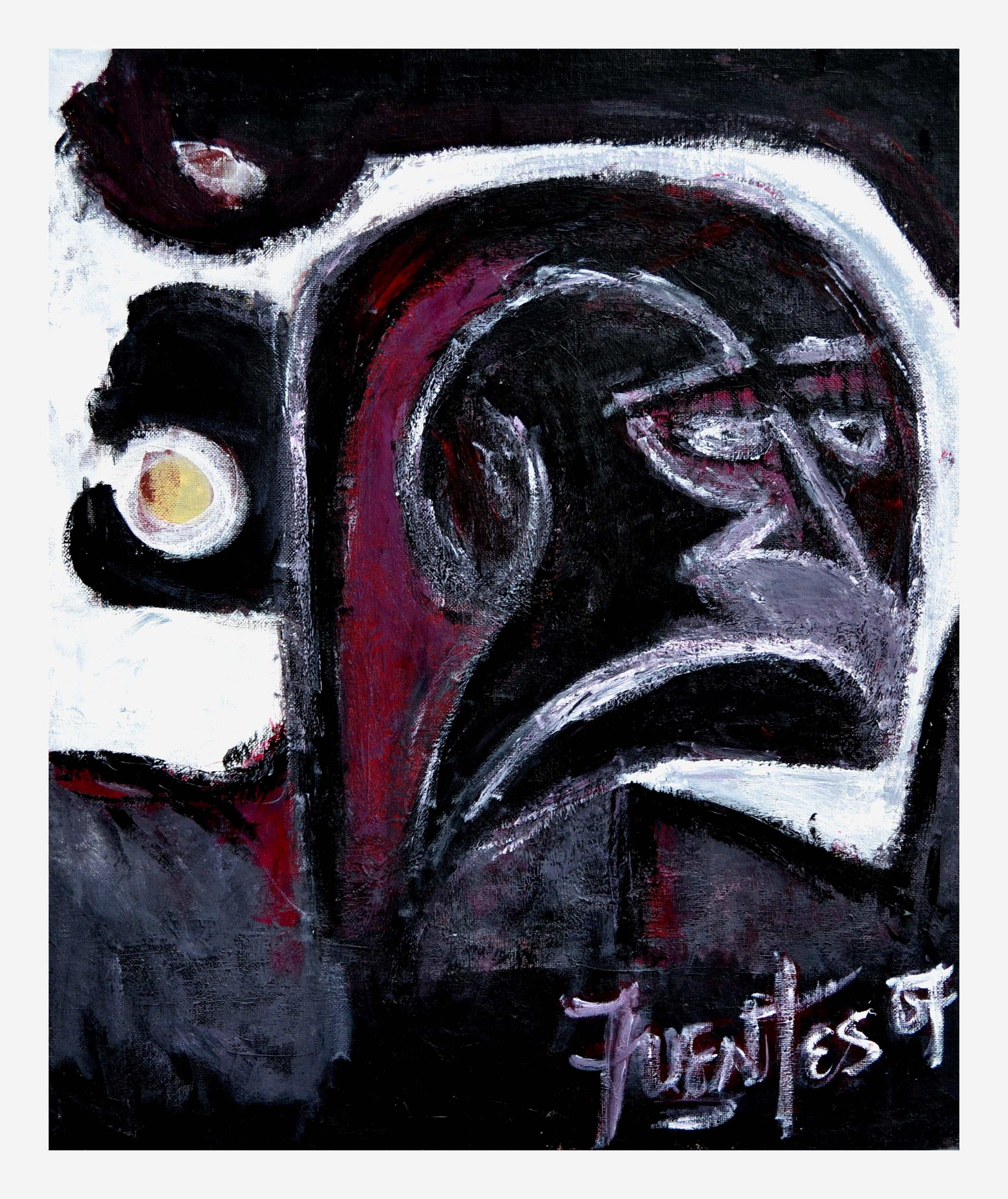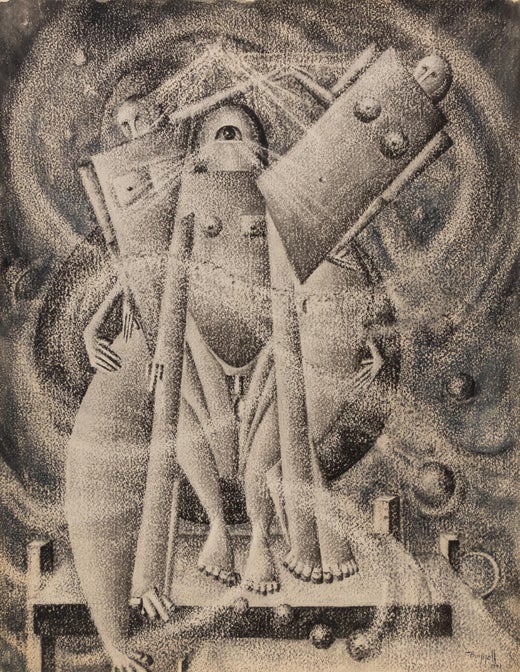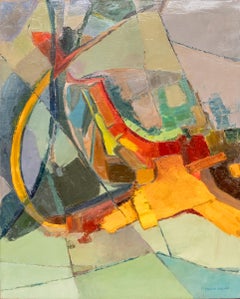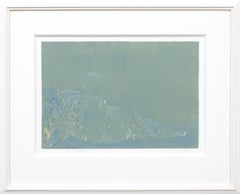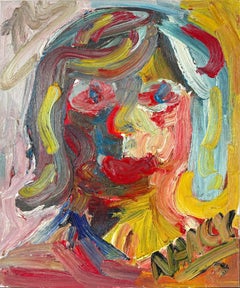
1950s Abstract Expressionist Painting: Yellow Gold Red Brown Orange Blue
View Similar Items
Video Loading
Want more images or videos?
Request additional images or videos from the seller
1 of 13
Charles Ragland Bunnell1950s Abstract Expressionist Painting: Yellow Gold Red Brown Orange Blue1955
1955
$3,995List Price
About the Item
- Creator:Charles Ragland Bunnell (1897-1968, American)
- Creation Year:1955
- Dimensions:Height: 22.25 in (56.52 cm)Width: 26.5 in (67.31 cm)Depth: 0.75 in (1.91 cm)
- Medium:
- Movement & Style:
- Period:
- Condition:very good vintage condition; custom frame has recently been added.
- Gallery Location:Denver, CO
- Reference Number:Seller: DCG-134231stDibs: LU2732357043
Charles Ragland Bunnell
Charles Bunnell developed a love for art at a very young age. As a child in Kansas City, Missouri, he spent much of his time drawing. When he was unable to find paper he drew on walls and in the margins of textbooks for which he was often fined. Around 1915, Bunnell moved with his family to Colorado Springs, Colorado. He served in World War I and later used his GI Training to study at the Broadmoor Art Academy (later renamed the Colorado Springs Fine Arts Center) during 1922 and 1923. In 1922, he married fellow student, Laura Palmer. He studied with Ernest Lawson in 1927-1928 and, in the winter of 1928-1929, he served as Lawson’s assistant. In the late 1920’s, the Bunnell’s settled just west of Colorado Springs and 1928, they welcomed the first of their three children. Their one-acre homesite, which they referred to as “Old Home Place”, was situated between two sets of railroad tracks at the foot of Pike’s Peak. Charlie converted an old railroad boxcar into his studio, where he later gave lessons. Beginning in 1931, Bunnell spent a year and a half studying under Boardman Robinson. The two men clashed constantly due to a generation gap and markedly different philosophies. Robinson encouraged his students not to stray from realism and though Bunnell mastered Robinson’s preferred style of American Scene painting, he regularly irritated his professor with his abstract sketches. Bunnell taught at the Kansas City Art Institute during the summers of 1929, 1930, 1940, and 1941. Between 1934 and 1941, he painted and taught under federal projects which included assisting Frank Mechau on murals for the Colorado Springs Post Office. However, he did not take to mural making and, after criticism from Boardman Robinson about his use of “heavy daubs which have no place in mural work,” he abandoned mural-making altogether. By the late 1930’s, Bunnell’s work departed from the American Scene/Modernist style he was trained in towards abstraction. This is marked by his “Black and Blue” series, consisting of 83 abstracted ink and watercolors. Affected by the Second World War and the loss of his 10-year old son, Bunnell’s work of the early 1940’s took on a Transcendental and Surrealist tone. The works from this period are moody and readily reflect the political and personal turmoil experienced by the artist. In the late 1940’s, Bunnell began experimenting with Abstract Expressionism. He alone is credited with introducing Colorado Springs to the new style as it was excluded from the Fine Art Center’s curriculum by Boardman Robinson. Bunnell excelled in Abstract Expressionism and continued to evolve in the style through the 1950’s continuing to his death in 1968. He was recently recognized as a premier American Abstract Expressionist by his inclusion in the book American Abstract Expressionism of the 1950’s: An Illustrated Survey. © David Cook Galleries, LLC
About the Seller
5.0
Vetted Professional Seller
Every seller passes strict standards for authenticity and reliability
Established in 1979
1stDibs seller since 2013
289 sales on 1stDibs
Typical response time: 13 hours
Authenticity Guarantee
In the unlikely event there’s an issue with an item’s authenticity, contact us within 1 year for a full refund. DetailsMoney-Back Guarantee
If your item is not as described, is damaged in transit, or does not arrive, contact us within 7 days for a full refund. Details24-Hour Cancellation
You have a 24-hour grace period in which to reconsider your purchase, with no questions asked.Vetted Professional Sellers
Our world-class sellers must adhere to strict standards for service and quality, maintaining the integrity of our listings.Price-Match Guarantee
If you find that a seller listed the same item for a lower price elsewhere, we’ll match it.Trusted Global Delivery
Our best-in-class carrier network provides specialized shipping options worldwide, including custom delivery.More From This Seller
View All1960s Mid-Century Abstract Expressionist Oil Painting in Primary Colors
By Florence Graziano
Located in Denver, CO
This original 1960s oil on canvas by American artist Florence V. Mercolino Graziano exemplifies the dynamic energy of the Abstract Expressionist movement. The composition showcases b...
Category
1960s Abstract Expressionist Abstract Paintings
Materials
Oil
Original Mixed Media Abstract “The Embrace” by Wilma Fiori, Framed 1/1 Work
Located in Denver, CO
This captivating original mixed media abstract painting, titled “The Embrace”, is a emotionally evocative work by renowned Denver modernist artist Wilma Fiori (1929–2019). Created us...
Category
Late 20th Century Abstract Expressionist Abstract Paintings
Materials
Ink, Mixed Media, Oil
1944 Abstract Oil Painting by Werner Drewes, Mid-Century Modern Masterpiece
By Werner Drewes
Located in Denver, CO
This captivating 1944 abstract oil on canvas by renowned artist Werner Drewes exemplifies mid-century modern art at its finest. Featuring bold, vibrant hues of green, blue, and red, ...
Category
20th Century Abstract Expressionist Abstract Paintings
Materials
Oil
$7,000 Sale Price
20% Off
Along the Way, 1960s Large Abstract Oil Painting, Green & Orange, Vibrant Colors
Located in Denver, CO
This original mid-century modern abstract oil painting by Watson Bidwell (1904-1964) features vibrant hues of orange, green, and white set against a bol...
Category
Mid-20th Century Abstract Expressionist Abstract Paintings
Materials
Oil
1950s New York City Abstract Skyline - Moody Night Cityscape Oil Painting
By Charles Ragland Bunnell
Located in Denver, CO
This stunning 1951 oil painting on board by renowned American artist Charles Ragland Bunnell captures an abstracted New York City skyline in a rich nocturnal color palette of black, ...
Category
1950s Abstract Expressionist Abstract Paintings
Materials
Oil
1950s Abstract Oil Painting, Mid-Century Modern Art in Blue, Black & White
By Paul Kauver Smith
Located in Denver, CO
This original 1950s abstract oil painting by acclaimed Mid-Century Modern artist Paul K. Smith (1893–1977) features a dynamic and refined composition in tones o...
Category
Mid-20th Century Abstract Expressionist Abstract Paintings
Materials
Oil
You May Also Like
Lady with a Hat Abstract Expressionist Heavy Impasto Figurative Original Oil
Located in Soquel, CA
Lady with a Hat Abstract Expressionist Heavy Impasto Figurative Original Oil
Abstract Expressionist painting of a close-up, expressive portrait of a woman by an unknow artist, rende...
Category
1960s Abstract Expressionist Figurative Paintings
Materials
Canvas, Oil, Illustration Board
Vintage Abstract Expressionism -- Pink Figural
By Daniel David Fuentes
Located in Soquel, CA
Abstract figure in pink by by San Francisco, California area artist Daniel David Fuentes (American, 1978-2016), (AKA, Xavier Lundt) (American, 20th Century). From a collection of hi...
Category
1990s Abstract Expressionist Figurative Paintings
Materials
Oil, Canvas, Cardboard
$1,276 Sale Price
20% Off
Bright Colorful Abstract Expressionist
By Anthony Rappa
Located in Soquel, CA
Bright, colorful abstract expressionist piece by Monterey, California artist Anthony Rappa (American, 20th Century). Heavy, textured pa...
Category
1980s Abstract Expressionist Abstract Paintings
Materials
Canvas, Oil, Cardboard
$1,480 Sale Price
20% Off
Workers
Located in Riga, LV
Aleksandr Rodin (1922-2001)
Painter Born in a family of farmers. Wife Rasma Lace - art scholar. Studied at the Stalingrad School of Art, Saratov Art School, graduated from the Depar...
Category
1980s Abstract Expressionist Figurative Paintings
Materials
Oil, Cardboard, Canvas
“Lightride”
By Syd Solomon
Located in Southampton, NY
Here for your consideration is a great example of the artwork of the well known American artist, Syd Solomon. Signed top left. Titled and dated verso 1978. The painting is oil and acrylic paint on mounted synthetic canvas. Condition is excellent. Overall framed measurements are 44.75 by 24.5 inches. Provenance: A Sarasota, Florida collector.
SYD SOLOMON BIOGRAPHY American 1917-2004
Written by Dr. Lisa Peters/Berry Campbell Gallery
“Here, in simple English, is what Syd Solomon does: He meditates. He connects his hand and paintbrush to the deeper, quieter, more mysterious parts of his mind- and he paints pictures of what he sees and feels down there.”
--Kurt Vonnegut Jr. from Palm Sunday, 1981
Syd Solomon was born near Uniontown, Pennsylvania, in 1917. He began painting in high school in Wilkes-Barre, where he was also a star football player. After high school, he worked in advertising and took classes at the Art Institute of Chicago. Before the attack on Pearl Harbor, he joined the war effort and was assigned to the First Camouflage Battalion, the 924th Engineer Aviation Regiment of the US Army. He used his artistic skills to create camouflage instruction manuals utilized throughout the Army. He married Ann Francine Cohen in late 1941. Soon thereafter, in early 1942, the couple moved to Fort Ord in California where he was sent to camouflage the coast to protect it from possible aerial bombings. Sent overseas in 1943, Solomon did aerial reconnaissance over Holland. Solomon was sent to Normandy early in the invasion where his camouflage designs provided protective concealment for the transport of supplies for men who had broken through the enemy line. Solomon was considered one of the best camoufleurs in the Army, receiving among other commendations, five bronze stars. Solomon often remarked that his camouflage experience during World War II influenced his ideas about abstract art. At the end of the War, he attended the École des Beaux-Arts in Paris.
Because Solomon suffered frostbite during the Battle of the Bulge, he could not live in cold climates, so he and Annie chose to settle in Sarasota, Florida, after the War. Sarasota was home to the John and Mable Ringling Museum of Art, and soon Solomon became friends with Arthur Everett “Chick” Austin, Jr., the museum’s first Director. In the late 1940s, Solomon experimented with new synthetic media, the precursors to acrylic paints provided to him by chemist Guy Pascal, who was developing them. Victor D’Amico, the first Director of Education for the Museum of Modern Art, recognized Solomon as the first artist to use acrylic paint. His early experimentation with this medium as well as other media put him at the forefront of technical innovations in his generation. He was also one of the first artists to use aerosol sprays and combined them with resists, an innovation influenced by his camouflage experience.
Solomon’s work began to be acknowledged nationally in 1952. He was included in American Watercolors, Drawings and Prints at the Metropolitan Museum of Art, New York. From 1952–1962, Solomon’s work was discovered by the cognoscenti of the art world, including the Museum of Modern Art Curators, Dorothy C. Miller and Peter Selz, and the Whitney Museum of American Art’s Director, John I. H. Baur. He had his first solo show in New York at the Associated American Artists Gallery in 1955 with “Chick” Austin, Jr. writing the essay for the exhibition. In the summer of 1955, the Solomons visited East Hampton, New York, for the first time at the invitation of fellow artist David Budd...
Category
1970s Abstract Expressionist Abstract Paintings
Materials
Canvas, Oil, Acrylic, Board
$28,000
A Bright & Colorful Mid-Century Modern Surrealist Abstract Painting
By Harold Haydon
Located in Chicago, IL
Add some life to your room with this bright & colorful Mid-Century, Abstract Expressionist painting by artist Harold Haydon. Floated in a black, wooden frame. Image size: 10" x 14...
Category
1960s Abstract Expressionist Abstract Paintings
Materials
Canvas, Oil, Board


